The Essential Guide to Rustic Christmas Tree Ornaments: Beautifying Your Holiday Season
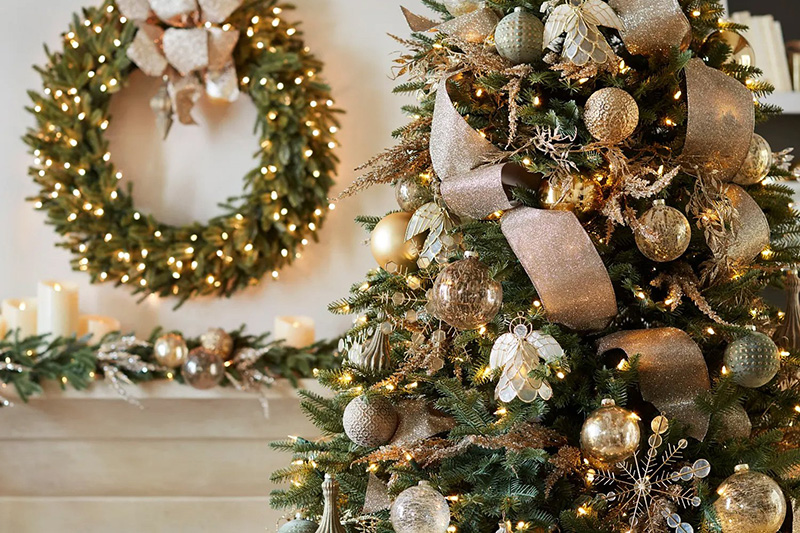
Christmas is not just a season, it’s a feeling. A feeling of joy, warmth, and nostalgia people feel when the jingle bells start jingling. Year after year, there will be traditions (new or old), there will be love, and there will be much to be grateful for. Central to these traditions is the Christmas tree, a beacon of the holiday spirit. But what truly brings a Christmas tree to life? The ornaments. Each ornament, from the shimmering finials to the intricate snowflake, carries a piece of history, a snippet of culture. This guide delves into the world of rustic Christmas tree ornaments, offering you a treasure trove of information on their history, types, materials, and tips that will ensure your tree stands out with elegance and style.
History of Christmas tree ornaments
The tradition of decorating a Christmas tree goes back centuries, with its origins often traced back to 16th-century Germany. Originally, trees were decorated with fruits, nuts, and other natural elements that symbolized the hope and abundance of the coming spring. Over time, the evolution of ornaments, with each era adding to their innovation and style. The Victorian era, for example, introduced the first glass ornaments, adding a touch of elegance and sparkle that has since become synonymous with holiday decor.
Diverse types of Christmas tree ornaments
Rustic Christmas tree ornaments come in a myriad of shapes, sizes, and designs, each adding a unique touch to the Christmas tree. Below is a list of some of the most beloved types:

Globe Ornaments
Also known as baubles, globes, and ball ornaments, these spherical decorations are a staple of holiday decorations and are often made of glass, metal, and acrylic, reflecting light and adding depth and luster to your Christmas tree.

Finials Tree Topper
The finial, often a spire or a decorative point that is placed at the top of a Christmas tree. Finial tree toppers come in various materials such as glass, metal, or plastic, and they can be adorned with glitter, beads, or other embellishments to match the theme of the tree decorations. Its origins trace back to traditional glass-blowing techniques, offering a wide range of options to suit different tastes and preferences.
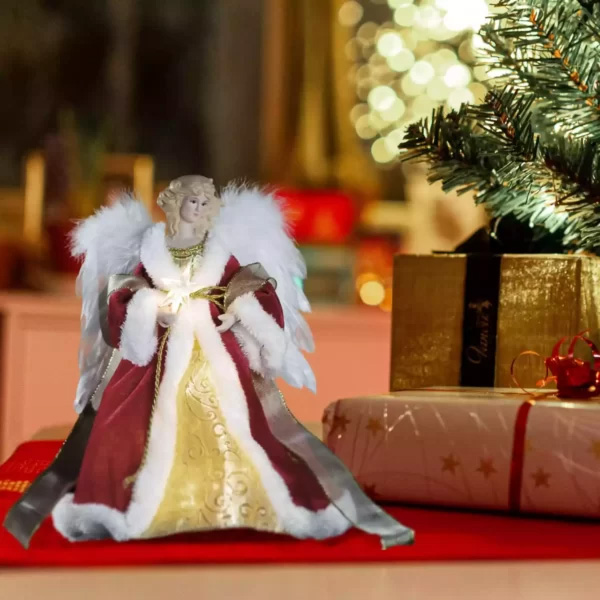
Angel Tree Topper
Angels have adorned the tops of Christmas trees for generations, symbolizing peace and protection. This tradition comes from the original Christmas story: Angels visited Joseph and the Virgin Mary about the upcoming birth of Jesus, and on the night of his birth, angels appeared in the sky over Bethlehem to announce his arrival to the world.
Because of the religious significance of this tradition, it’s been thought that placing an angel on top of the tree would also scare away evil spirits from the home around the holidays.

Egg Ornaments
Inspired by the tradition of Fabergé eggs, these ornaments add a luxurious touch with their intricate designs and rich colors, embodying the spirit of renewal and birth.

Christmas Tree Figurine
Figurines on Christmas trees are decorative ornaments or small sculptures that hang or are placed on the branches of the tree. These figurines come in varieties of shapes, sizes, and designs, and depict a wide variety of themes, including traditional Christmas themes such as angels, Santa Claus, snowmen, reindeer, elves, and nativity scene characters. Christmas tree figurines add visual interest, personality, and charm to holiday displays and enhance the festive mood of the holiday season.by the tradition of Fabergé eggs, these ornaments add a luxurious touch with their intricate designs and rich colors, embodying the spirit of renewal and birth.
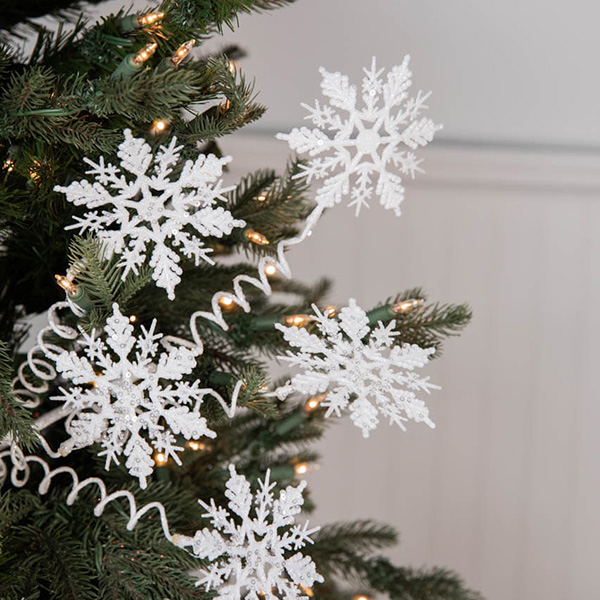
Snowflake Christmas ornaments
Snowflake Christmas ornaments are made of glass or iron, and shaped like snowflakes. They can be used in combination with other ornaments or as a theme on their own to create an enchanting, magical look.
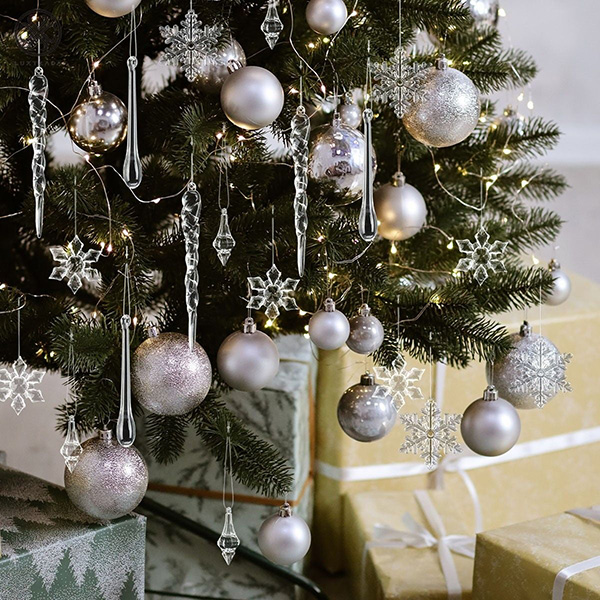
Icicles
Christmas icicles, also known as tinsel icicles, are thin, elongated strands of shiny material that are used as decorations on Christmas trees. Traditionally made from lead, modern icicles are typically crafted from safer materials such as plastic, foil, or metallic thread. They are designed to mimic the appearance of natural icicles hanging from the branches of a tree.
Common ornament materials
The beauty of Christmas ornaments lies not just in their designs but also in the materials from which they are crafted. Each material brings its own texture, weight, and luster to the ornament, contributing to the tree’s overall aesthetic.
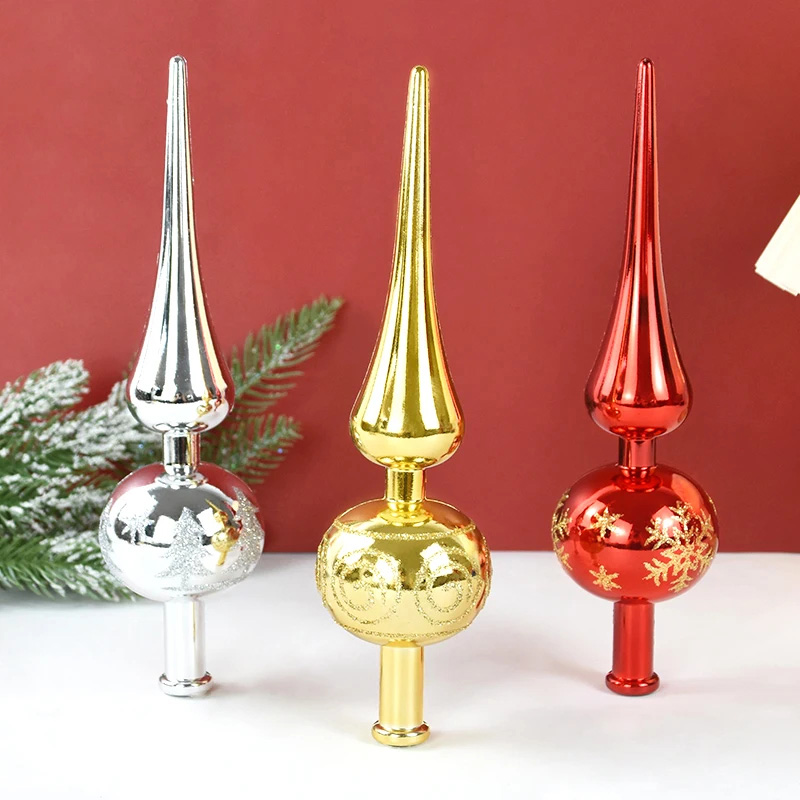
Glass
Classic and elegant, glass ornaments offer a reflective quality that amplifies the tree’s liGlass ornaments date back to 18th century Germany. Artisans entail heating a glass tube, inserting the ends into clay molds, and blowing the glass into the shape of the molds. lights and colors.
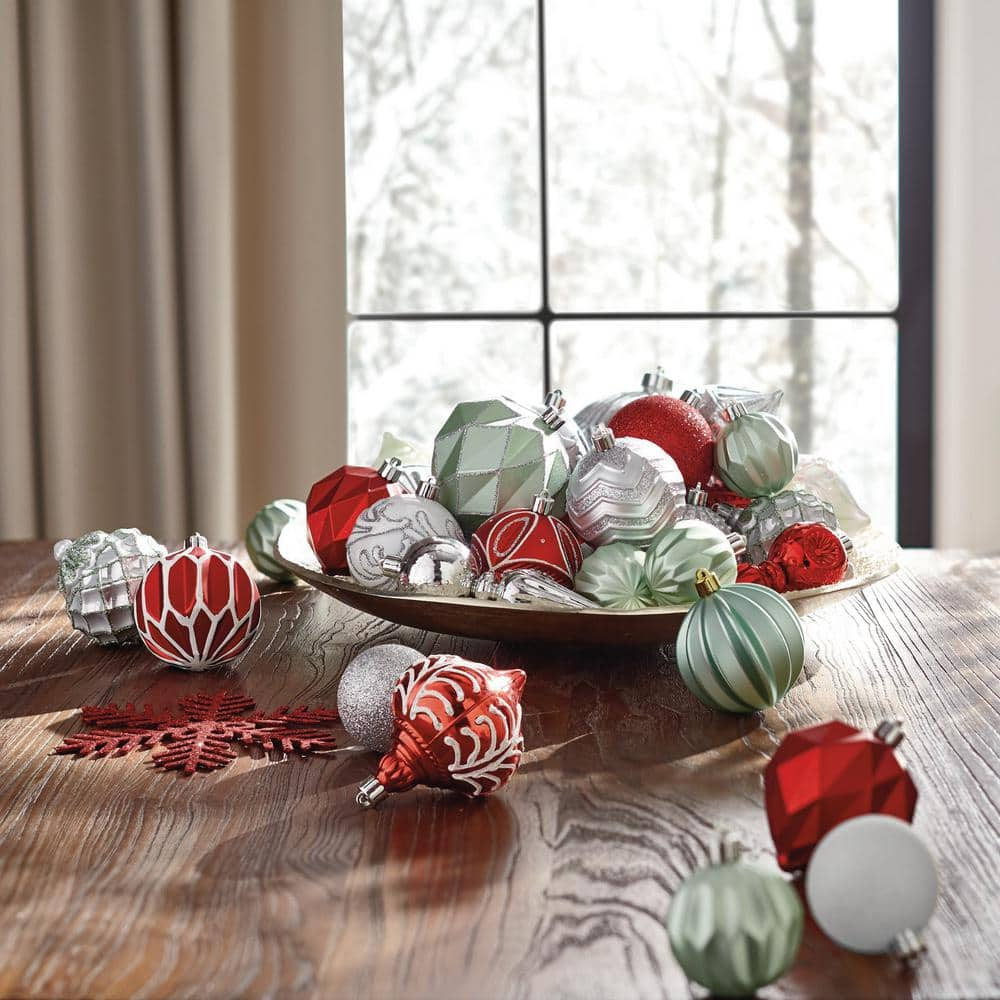
Mercury Glass
Also known as silver glass, the first mercury glass Christmas ornaments were produced around 1850 in Europe. They feature bright, saturated colors, sparkling in the holiday light.

Wood
These decorations can be as simple as stars, cardinals as wooden houses, etc. They can be hand-carved or laser-cut and made from different types of wood. Wooden decorations are versatile and complement the rustic Christmas decorating theme.

Metal
Common metal decorations are iron, copper, or various alloys such as steel. You can find crystal beadwork in various shapes and designs, snowflake decorations, etc.

Fabric
Fabric Christmas decorations are made from felt, burlap, wool, or any type of fabric. They are usually made by hand and have a charming handmade charm. Fabric decorations come in a variety of designs and add a wonderful texture to the Christmas tree.
Tips for decorating with ornaments
Decorating a Christmas tree is an art form in itself, a creative expression that marries tradition with personal taste. Here are some expert tips to elevate your ornament game:
- Determine How Many Ornaments You Need: A good rule of thumb is to use about 10-15 ornaments per foot of tree height. However, feel free to adjust based on the look you’re aiming for, whether minimalist or lush.
- Categorize Your Ornaments: Start by sorting your ornaments by type, size, and color. This will help you create a cohesive look and ensure that each ornament finds its perfect spot on the tree.
- Hang Ornaments Last: First, set up your lights and garlands to serve as the backdrop for your ornaments. This approach allows you to strategically place ornaments in a way that complements the tree’s overall lighting and texture.
- Layer Your Ornaments: Begin with larger, basic ornaments to establish your color scheme and fill space, then layer with more unique and intricate pieces to add depth and interest.
Conclusion
In conclusion, rustic Christmas tree ornaments are more than just decorations; they are storytellers, keepers of memories, and harbingers of joy. As you deck your halls this holiday season, remember that each ornament you hang is a reflection of your personal journey, your family’s traditions, and the timeless spirit of Christmas. Let this guide inspire you to create a holiday display that resonates with beauty, history, and the magic of the season. Happy decorating!
